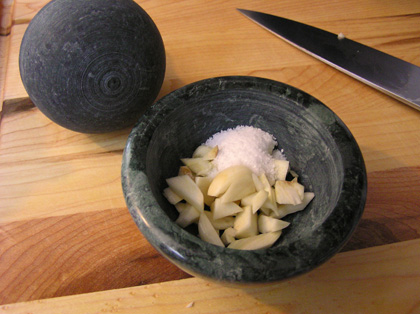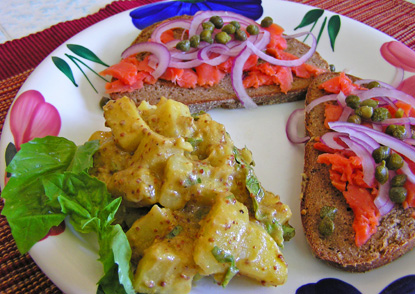India rejected the nation’s first genetically modified food after their farmers protested. Good for them! Genetically modified food has not been tested on humans. Well…unless… you count the fact that in the U.S., we’ve been tested on for years without our knowledge. “Huh?” you say? According to this Wikipedia article, GM foods have been available to the processed food industry since the 1990s and 75% of all processed food contains at least one GM ingredient. Yep. I never signed on to be a lab rat and neither did you, but sometimes our rights as citizens are benignly neglected for a few dollars in the right pockets.
Now, let’s ignore the fact that we are lab rats for a minute and think about the other implications of genetic engineering. Companies are allowed to patent their GM seeds. Already, there are legal battles going on between corporations and farmers over the simple act of saving seeds for the next years crops. Farmers don’t own the patented seeds, Corporations do. Farmers are required to buy the seeds each time they want to grow a crop, they cannot save seed for this purpose as Farmers have for millennia. If Farmer’s can’t save patented seed, neither can we. Our basic right as humans to feed ourselves in a self-sufficient manner is being removed.
A friend of mine let me know about this documentary on Hulu.com (Thanks R.!). It is called The Future of Food and it runs about an hour and a half with short commercial breaks. If you have time, I encourage you to watch it.
Vodpod videos no longer available.
I have been following this issue for years. For me, I try to avoid most processed foods unless they are made of mostly organic ingredients. I eat organics as much as I can and buy locally from farmers who use organic or sustainable practices and grow heirloom varieties of food. I have even gone so far as to seek out organic canola oil that has been tested for GMOs since canola has had problems with contamination in the past. It’s difficult and I don’t do a great job (I have a bit of a restaurant addiction) but I think it’s important to limit my exposure to GMOs as much as I can.





















Abominable giant salmon coming soon to a fast food restaurant near you!
June 28, 2010 at 6:19 pm (Commentary, Corporate Food, Good food gone wrong, Special discussion topics, Venting)
Tags: Food labeling, Frankenfood, Genetically modified
Did you hear the news this week? The FDA is close to approving genetically modified salmon. When I read about this for the first time earlier this week, I got a little knot in my stomach. I’ve always been opposed to GM foods but somehow, it felt a little easier to me to accept that man is messing with nature on a plant level. Once we begin to play god with higher order creatures…who knows what mayhem will ensue?
You see nature has a way of doing it’s own thing. Did you see Jurassic Park? The park owner hired geneticists who assured him that the cloned dinosaurs could not breed since they were sterile females. They ended up breeding anyway. I know what you are thinking: that was a fictional story. According to the article on GM salmon, the GM fish will be sterile females. The geneticists are doing this on purpose so that the salmon won’t be able to breed. If they get out, wild salmon stocks will be safe from contamination from these GM abominations. But, fish are strange creatures. They can change their sex from female to male if there are not enough males for breeding in a given population. It has also been documented that a shark held in captivity had a virgin birth. Hopefully fish cannot reverse sterilization.
As I was doing research for this post, I came across another scary article. According to this article, Russian scientists carried out an experiment where they fed GM foods to hamsters. The GM food was fed to each succeeding generation of hamster. Eventually, the fourth generation fed exclusively on a GM diet became sterile. Genetically modified foods are included in something like 75% of our processed foods now. This has been happening since the 1990’s. We should be on our second generation and going on our third generation of people who have been eating GM foods. This could get interesting pretty fast.
Now, I understand the urgency to get a salmon to market that will beef up to marketable size in fewer weeks than a conventional salmon would. Could you imagine how much money a McSalmon sandwich would make for McDonald’s? It would be huge for them! When beef cows and chickens were hybridized to grow to market size quickly, it revolutionized fast food. It made it possible to provide those billions of Big Macs and chicken McNuggets that are served every day. I just wish that corporate profits weren’t tied into the possibility that our health could be compromised in ways we never knew existed.
I am one angry little consumer and I am doing what I can. I try to vote with my dollars and I go to the FDA site to voice my disgust when they open things up to discussion. If I have no real say on the outcome of the decisions that the FDA makes on our behalf, then all I can wish for or hope for is that the FDA will finally help protect our interests just a bit and call for labeling of GM products. I just want to continue to at least think that I have a choice in regards to what I eat. Unless I am given the luxury of knowing what is in my food, I guess I will just remain afraid. Very afraid.
10 Comments